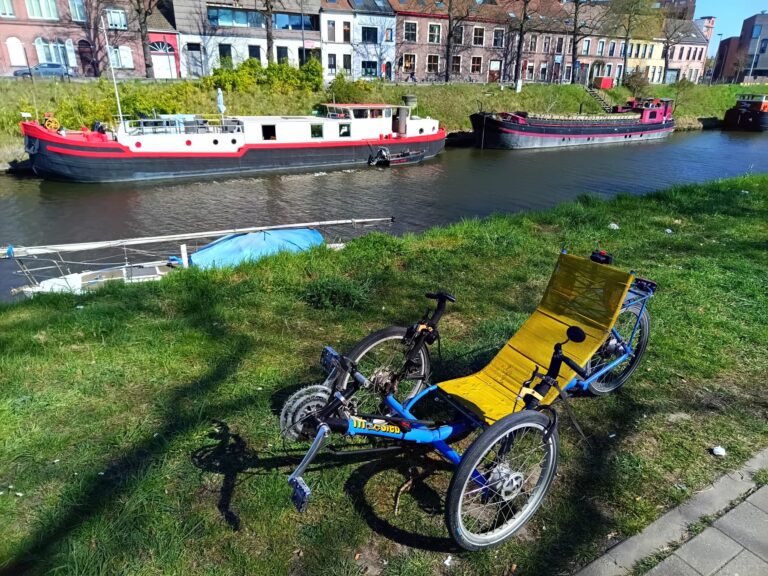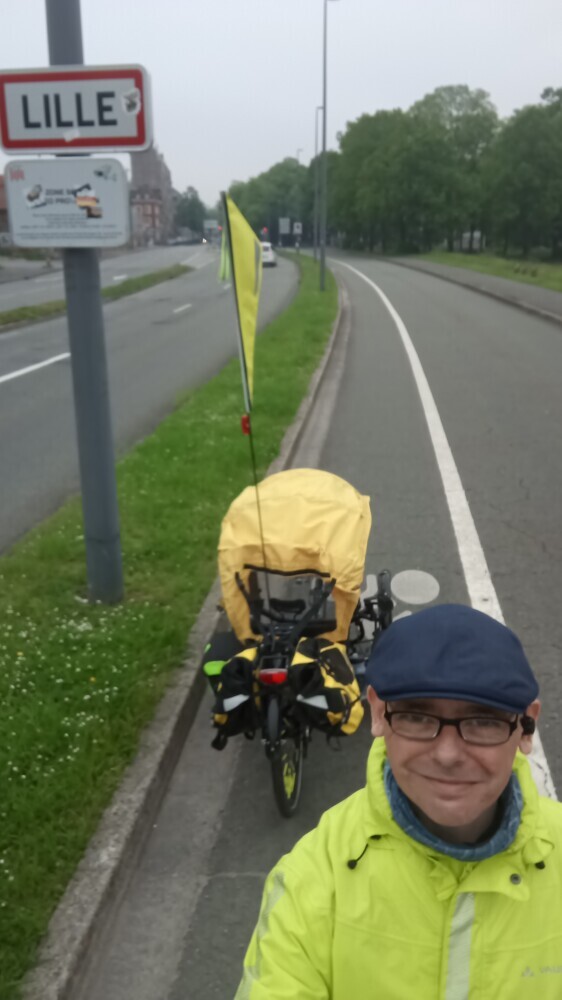🚴 Fietssnelwegen In Belgium: The Ultimate Guide To Cycling Highways For Recumbent Trike Riders 🚴
🌱 Introduction
Imagine cruising along a smooth, car-free path that feels like it was tailor-made for your recumbent trike. Welcome to Belgium’s cycling highways – the fietssnelwegen. These high-quality, high-speed cycling routes offer a dream come true for trike enthusiasts, long-distance commuters, and adventure seekers alike. Whether you’re commuting from Ghent to Antwerp or exploring the green heart of Flanders, this guide unlocks the full potential of cycling highways for your next ride.
🗂️Key Information🗂️
🌍 What Are Fietssnelwegen?
Cycling highways (fietssnelwegen in Dutch) are fast, direct, and safe bike routes that connect cities and towns across Belgium. Unlike regular bike paths, these are designed for long-distance travel with minimal stops, wide lanes, smooth asphalt, and full separation from motor traffic wherever possible.
🛍️ Who Uses Them?
Perfect for commuting cyclists, long-distance touring enthusiasts, e-bike riders, and of course – recumbent trike riders. With a consistent surface and low gradient, they provide a smooth experience even for trikes with low clearance.
📍 Where Are They?
Fietssnelwegen can be found throughout Flanders, and new segments are constantly being added. Key corridors include:
🚊 F3 Leuven – Brussels
🚊 F7 Kortrijk – Waregem – Gent
🚊 F1 Antwerp – Mechelen – Brussels
A full overview is available on fietsnet.be
🏢 Regional Highlights on Fietssnelwegen
💚 F3 Leuven – Brussels: Stunning sunrise views through rural Flemish Brabant, with detours to historic abbeys and modern cycling infrastructure woven into urban design.
🚗 F1 Antwerp – Mechelen – Brussels: A backbone of northern Belgium’s commuting network. Marvel at the contrast between Antwerp’s port vibe and Mechelen’s cobblestone charm. Fully paved, with numerous rest stops and supermarkets en route.
🌿 F7 Kortrijk – Waregem – Gent: This west-east corridor slices through pastoral landscapes and charming small towns. Ideal for combining with knooppunt loops for extra (s)miles.
🔧Practical Tips and Techniques🔧
🌧️ Start Early, Cruise Far
Begin your ride in the golden light of morning. Fietssnelwegen allow you to cover major distances efficiently – ideal for riders with panniers or trailers.
🚗 Mind the Crossings
Some intersections with regional roads or railway lines remain. Approach these with care – even the best cycling highways still share space occasionally.
🧳 Pack Smart, Ride Light
Water, snacks, basic repair gear, and layered clothing are key. Belgium’s weather can be unpredictable, and being self-reliant enhances your freedom.
🦿 Use Offline Maps
OsmAnd+ or Komoot let you preload maps, so poor signal won’t interrupt your flow. Crucial in rural areas or industrial zones.
💡Important Considerations💡
🔍 Trike Clearance and Width
Most fietssnelwegen are wide enough for recumbent trikes. But occasionally, gates or bollards may be tight – especially at entry points. Preview key segments on Google Street View or check forums like BentRiderOnline for rider feedback.
🚑 Health and Safety
Use powerful front and rear lights – even in daylight. Trikes are lower to the ground and more likely to be overlooked by inattentive drivers. Reflective vests and flags boost visibility.
🏦 Accommodation and Amenities
For multi-day rides, use platforms like Vrienden Op De Fiets or WarmShowers to find bike-friendly stays near your route. Plan stops near nodes of the cycling network.
🔄 Compare with Knooppunten and LF-Routes
While knooppunten are made for scenic detours and LF-routes for cultural depth, fietssnelwegen offer fast, efficient travel. They’re perfect for racking up serious (s)miles before branching into scenic loops later in the day.
🗂️Advanced Insights🗂️
🚀 Speed Touring Strategy
With moderate fitness and a streamlined setup, you can maintain 20–25 km/h (12–15 mph) on fietssnelwegen. That means 100–150 km (62–93 (s)miles) per day are easily within reach.
📊 Combine with LF or Icoonroutes
You don’t have to choose one or the other. Link fietssnelwegen to long-distance LF-routes or iconic scenic trails to enjoy both performance and beauty.
🎓 Learning from Commuters
Observe local riders: What bikes do they use? What gear setup? Their habits can teach you a lot about how to optimize your own trike for speed and comfort on these routes.
🚲Components or Tools to Focus On🚲
✅ Lubricants and grease: Essential for long rides. Keep your drivetrain silky-smooth with quality bike-specific lubricants.
🔋 Electrical systems: Check your lights, GPS, and power banks before every ride. Don’t let a dead battery derail your flow.
⚙️ Suspension pivots: Trike suspensions make a huge difference at speed. Clean and inspect them regularly.
🧩 Chain and gears: Precision pays off. Tune your derailleur, check for wear, and keep the chainline aligned – especially if you’re hauling a trailer.
❓Frequently Asked Questions❓
Q: Are fietssnelwegen suitable for trikes with trailers?
A: Yes, in most cases. Just make sure the trailer fits through bollards or gates – widths vary slightly.
Q: Can I camp along the fietssnelwegen?
A: Wild camping is not officially permitted in Belgium. However, there are many bike-friendly campsites and “paalkampeerplaatsen” nearby – legal wild-style bivy spots.
Q: Are these routes usable in winter?
A: Absolutely. Many key segments are gritted or maintained year-round. Just watch for ice in shaded areas and bring thermal gloves.
📅Long-Term Strategies📅
🏡 Build Your Commute
If you live in Belgium, try integrating fietssnelwegen into your weekly habits. It transforms routine errands into wellness journeys.
🚪 Weekend Exploration
Use them as fast exits from the city. Within half an hour you’re in nature – ready to explore by knooppunt or forest path.
👩💼 Plan Multi-Day Trips
String together F1, F3, and F7 for a mega-tour across Flanders. Sleep in local inns or carry ultralight camping gear.
🌟 Share and Inspire
Log your rides on Strava or Komoot. Add photos. Share stories. Tag #Fietssnelweg or #TrikeTrotter. Inspire the next rider!
🚦Typical Challenges and How to Master Them🚦
🧱 Sudden Transitions
Not all cycling highways are fully completed. Some end abruptly or funnel into gravel or mixed-use paths. The solution? Keep alternative knooppunt nodes in mind and be ready to pivot your route. Sometimes detours lead to the most unexpected (s)miles.
🌬️ Wind Exposure
Many F-routes run along canals or train tracks – great for speed, but open to crosswinds. Add a fairing or windscreen if you have one, or plan routes according to wind direction. And when it’s at your back? Let the tailwind carry you like a sail.
🚦 Complex Intersections
Although fietssnelwegen aim for flow, some crossings still give priority to cars. Make eye contact with drivers, use lights and reflective gear, and when in doubt, seek nearby bike bridges or underpasses.
🔦 Tunnel Darkness
Long underpasses can be dim or poorly lit. Your lighting system isn’t optional – it’s essential. Equip your trike with strong front and rear lights, and consider a reflective vest for even greater visibility.
🧭 Navigation Gaps
Sometimes signage is lacking or detours are in place. That’s when offline navigation apps or printed backup maps come in handy. And if in doubt – ask a fellow cyclist. Belgians are usually helpful and friendly.
🎥Real Trike Riders on the Fietssnelwegen🎥
💬 “The F7 toward Ghent is my therapy route – flat, fast, peaceful. I shut off my mind, cruise in rhythm, and feel totally alive.” – Jeroen, ICE Sprint X rider from Waregem
💬 “I took the F3 with a trailer, tent, and stove. Four days from Leuven to Ghent and back. It felt like a full reset for my soul.” – Elke, Azub Ti-Fly triker
💬 “I thought my Hase Trigo was too slow for these highways. But it turns out, they’re perfect for the steady cadence of a trike.” – Benno, triker from Antwerp
💬 “I rearranged my work schedule so I could ride the F1 twice a week. I get to the office more energized than anyone else.” – Liesbet, commuting e-triker
These are not testimonials – they’re lived experiences. Shared by people like you. Riders who turned everyday roads into extraordinary journeys.
🚧What to Do When You Hit Construction🚧
🛠️ Even the best networks need maintenance. Fietssnelwegen are constantly expanding, improving, and sometimes… under construction. Here’s how to stay on track:
🗺️ Check ahead:
Use fietsnet.be or Geopunt to check for closures before you roll out.
🟧 Follow orange detour signs (“omleiding”)
They’re often bicycle-specific and fairly accurate.
📲 Use Komoot or RouteYou live
Both offer real-time rerouting features and community feedback. Ideal for spontaneous replanning.
🤝 Ask locals
At supermarkets, bus stops, or trailheads – Belgian cyclists are helpful and happy to assist.
🌅 Embrace the unexpected
Some detours lead through charming villages, windmills, or forgotten heritage sites. Use them as discovery opportunities – and capture them for your blog or socials 📸
🗺️Route Planning Tools in Detail: Komoot, RouteYou, Fietsnet🗺️
📱 Komoot
✨ Excellent for real-time navigation with voice prompts
✨ Perfect for loop planning and adjusting on the go
✨ Set your bike to “recumbent” for optimized paths
✨ Engaged community with highlights and reviews
🧭 RouteYou
🇧🇪 Built in Belgium – optimized for local infrastructure
🗺️ Create long-distance routes with POIs and elevation
🖨️ Print maps, export GPX files, or embed them in blogs
📚 Great for archiving tours and sharing public routes
🌐 Fietsnet.be
🧱 A bit old-school in design, but a data goldmine
🗺️ Shows complete knooppunten network and Fietssnelwegen overlays
🔧 Perfect for route prep and cross-checking official segments
🧩 Use the “Fietssnelwegen” overlay for visual clarity
🧠 Pro Tip: Plan your route on RouteYou, verify it on Fietsnet, then ride it using Komoot. This triple-combo gives you total control.
📅Long-Term Strategies📅
🎯 Make Fietssnelwegen the skeleton of your ride
Use them as the high-speed backbone of your touring setup. Add knooppunten for muscle, and LF-routes for soul.
📸 Create regular photo moments
Every ride can become a visual story. Graffiti walls, riverside benches, or misty tunnels make excellent visual content.
🏕️ Integrate stealth camping or micro-camping
Many Fietssnelwegen pass near nature reserves. With ultralight gear and respect for the environment, you can explore minimalist touring.
🧘 Train your mind
Long, uninterrupted stretches invite a meditative state. Focus on breath, pedal rhythm, and flow. Let the ride calm your thoughts and elevate your mood.
🏁Final Thoughts🏁
Fietssnelwegen aren’t just highways. They’re pathways to freedom, clarity, and pure joy. For trike riders, they remove the friction between dream and reality – making every ride smoother, safer, and infinitely more satisfying.
They turn a city commute into an adventure.
They make long-distance touring a pleasure, not a chore.
They unlock Belgium’s best-kept cycling secrets.
So, next time you spot a blue F-sign… follow it.
Your trike will know what to do. Your soul will thank you.
💬 What about you?
Have you explored the fietssnelwegen on your recumbent trike?
Drop a comment below, share your story, and let’s ride this movement together 🚴♀️🌍
📬 Want more recumbent trike adventures, gear tips, and exclusive route insights delivered straight to your inbox?
Join the TrikeTrotter community today and subscribe to our free newsletter!
👉 Click here to subscribe and never miss a (s)mile again.


